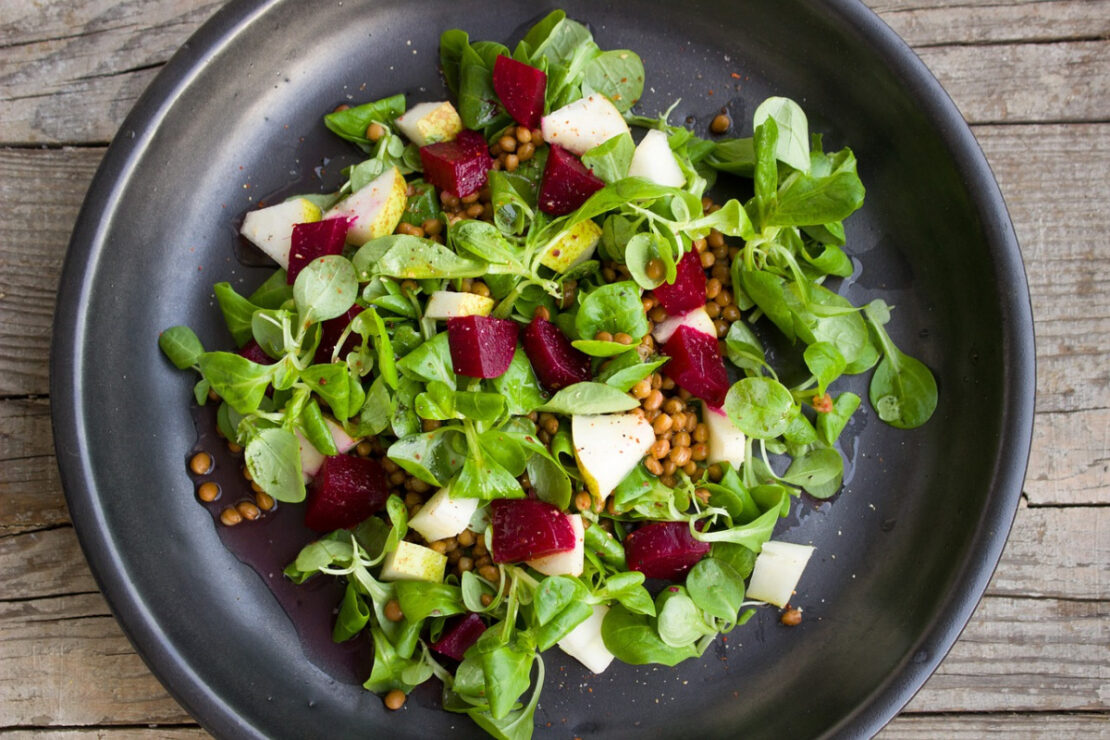
Ayurvedic Diet: Four Foods to Eat in the Fall
Again and again, I am drawn back to the wisdom of Ayurveda. This is for many reasons, one being that Ayurveda has helped me to become more aware of, and in tune with, the seasons. The transition from summer to fall marks the changeover from pitta season to vata season. Fall is the time of year in which vata dosha, with its cool, light, dry, mobile nature is dominant. Summer, on the other hand, is dominated by pitta dosha. This change in season is the perfect time to adapt food and lifestyle choices to fit the climate. In this post I will outline some fall ayurvedic diet basics and I will discuss four delicious and fitting foods to enjoy at this time of year. So get cozy and dig in—it’s time to celebrate autumn!

Vata Season: How To Stay Balanced
As I mentioned earlier, the cool, light, mobile, and dry qualities are indicative of vata dosha and these qualities tend to predominate in the fall. If you have a good amount of vata dosha in your constitution, you may be particularly susceptible to experiencing a vata imbalance in the fall. Here are some signs of vata imbalance to look out for:
- Dry skin
- Light sleep, or trouble sleeping
- Constipation
- Irregular appetite
- Trouble staying still
- Trouble focusing or remembering
- Nervousness
It is certainly possible to experience these symptoms any time of year (and regardless of your inherent constitution). However, on a positive note, if you detect any of these signs of imbalance and it happens to be fall, a vata-reducing, fall-friendly diet is the perfect thing for the season! A vata-reducing ayurvedic diet, which emphasizes foods that are warming, moist, and nourishing, is great for the fall and any time you experience an excess of vata dosha. (For more general tips on balancing vata dosha I invite you to read my post Introduction to Ayurveda: What’s My Dosha?). Also, this is not to say that diet alone will solve all the above problems, but food certainly helps form a healthy foundation for wellbeing.
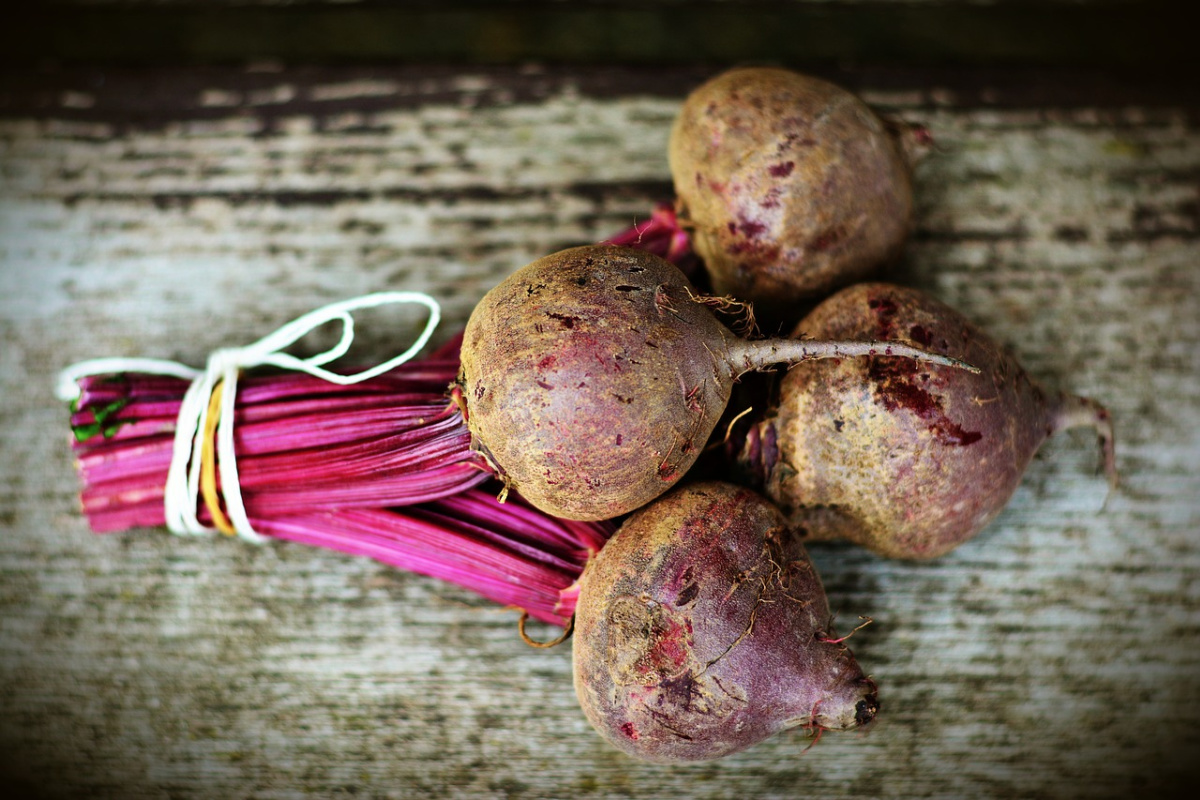
Ayurvedic Diet for the Fall
So what does Ayurveda say about fall foods? To begin with, many of the foods that are in season are going to be exactly what you want—and what your body is asking for. Some of the foods that are seasonal and especially beneficial for vata dosha include figs; dates; fennel; a variety of winter squash including delicata, kabocha, and butternut; spinach (cooked); beets and beet greens (especially for early autumn); leeks; okra; parsnips; rutabaga; sweet potatoes, and carrots. The idea is to balance out the cool, light, dry, mobile qualities of vata dosha with foods that are warming, heavy, and moist. For instance, sweet potatoes and winter squash possess earthy, watery qualities that offer moisture and a sense of grounding, providing nourishment and balance for vata dosha. Though okra is not as heavy as squash and sweet potatoes, its sliminess provides moisture and it is considered a nourishing, building vegetable, as opposed to leafy greens which are generally considered purifying. An abundance of vata dosha will tend to cause depletion and dryness, so moisture and nourishment are important, especially in the fall and winter. Also, baked or stewed apples with warming spices such as ginger and cinnamon are a wonderful choice in the fall, as are persimmons. Enjoying carminative spices such as ginger, cinnamon, and cardamom will assist in digestion and absorption and can calm excess gas and indigestion, a symptom of vata imbalance. As far as persimmons are concerned, for those with a lot of vata dosha in their constitution, they will want to focus on the moist, juicy Hachiya persimmons versus the astringent Fuyu.
Of course, there will be nuances depending on where you live and the climate of your particular region. If you live in a tropical zone, the flow of your seasons will take on a different flavor. For instance, I have spent a fair amount of time in Hawaii where there isn’t much in the way of a cool, dry season. And if you live in San Francisco, summers are cold and foggy whereas autumn is hot, and winter can be positively sunny. Differences in climate aside, the basic idea is to invoke the opposite. If the conditions are light, cool, dry, and mobile, you want to encourage heaviness, warmth, moisture, and stability. On the other hand, if the climate is moist and hot, you will benefit from focusing on foods that are cooling and somewhat astringent.
If you live in a place where summers are warm and fall is cool and dry, you may welcome or mourn the passage of summer. However you feel, there are many tasty, nourishing foods to choose from in the fall, harvest season. This is a great time of year to get cozy in the kitchen and enjoy nature’s bounty. Here are just a few great foods to enjoy in the fall. Consider integrating these produce items into your autumn ayurvedic diet to stay balanced and take full advantage of all the season has to offer.
Four Foods To Eat This Fall
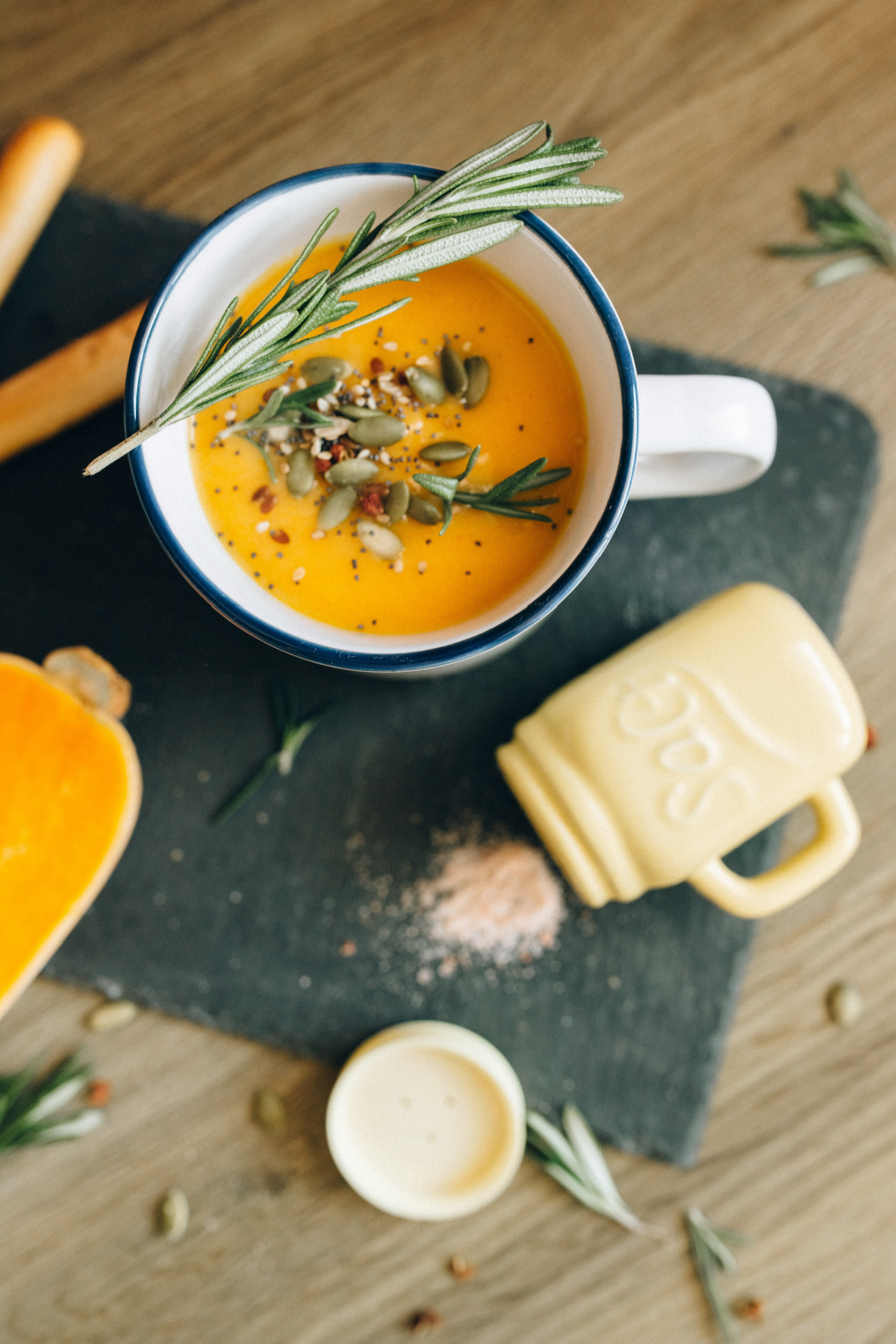
Delicata Squash
I came to appreciate this tender squash variety while living in San Francisco. After noticing these curiously-striped oblong beauties at farmers’ market and produce stands in the fall, I was pleased to discover that delicata is delicious, nourishing (rich in fiber, minerals, vitamins C and B6, and carotenoids), and easy to prepare (Harvard School of Public Health, n.d.). Its name indicates its tender, delicate skin; once cooked, you can eat delicata skin and all. Delicata likely ranks as one of the most user-friendly squash varieties!
Delicata squash has a creamy, flavorful inside and when cooked to perfection, its moist, slightly heavy qualities are balancing for vata dosha. This squash is so tasty as a stand alone, I usually slice it in half, scoop out the seeds, cut it into half moons, and roast with oil, salt, and herbs such as rosemary (Rosmarinus officinalis), oregano (Origanum vulgare), or thyme (Thymus vulgaris). Or, you can also put a sweeter spin on delicata and roast with cinnamon (Cinnamomum verum), ginger (Zingiber officinale), and cardamom (Elettaria cardamomum). All of these warming carminative spices are great to balance vata season too! For some spicy and sweet options for preparing delicata squash, you may want to check out my article Delicata is the Perfect Squash for Hibernation Season.
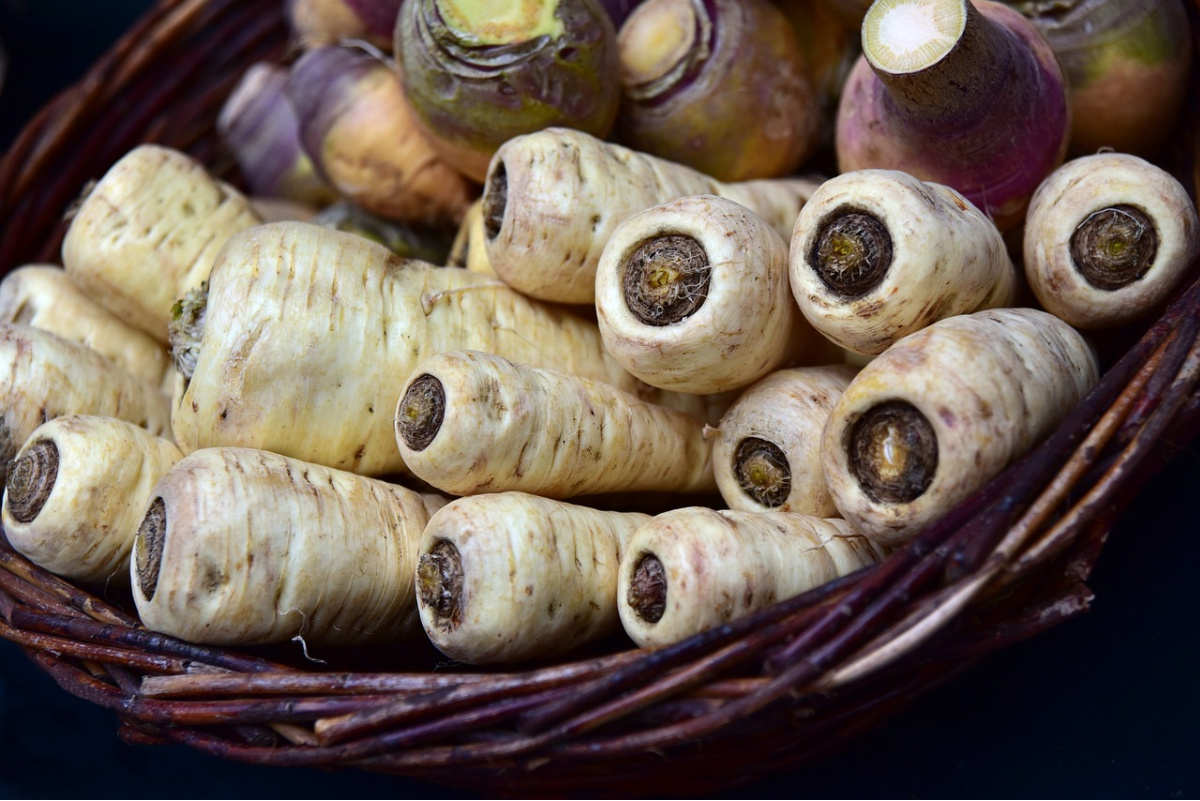
Parsnips
Parsnips don’t possess the alluring color of delicata squash, but these humble root vegetables are a surprisingly tasty, and sweet, balancing, and apt addition to your ayurvedic diet. In the same family as parsley and carrots (Apiaceae), parsnips look like large carrots that have been drained of all its color, and are especially stout at the top end. Yet, the pale, creamy color does not indicate a lack of flavor or value.
Parsnips have a sweet flavor and an overall nourishing effect (Lad & Lad, 2009). Some sources say that parsnips are cooling whereas others indicate that they are warming, but regardless, their sweet, somewhat heavy nature makes them balancing for vata dosha and a wonderful choice for the fall.
Author, teacher, and nutrition researcher Paul Pitchford (2002) explains that parsnips quell wind and damp conditions, lubricate the intestines, and help clear liver and gallbladder obstructions.
Unlike carrots, you definitely don’t want to eat a parsnip raw. However, they are delicious roasted—either as a stand alone or with other root veggies. Slice into bite-sized chunks and roast with oil, salt, onions, and spices of choice. Oregano (Origanum vulgare), thyme (Thymus vulgaris), black pepper (Piper nigrum), and rosemary (Rosmarinus officinalis) work well, and curry spices also complement parsnips, such as in this Curried Parsnips and Carrots recipe. Also, consider integrating parsnips into soups and stews.
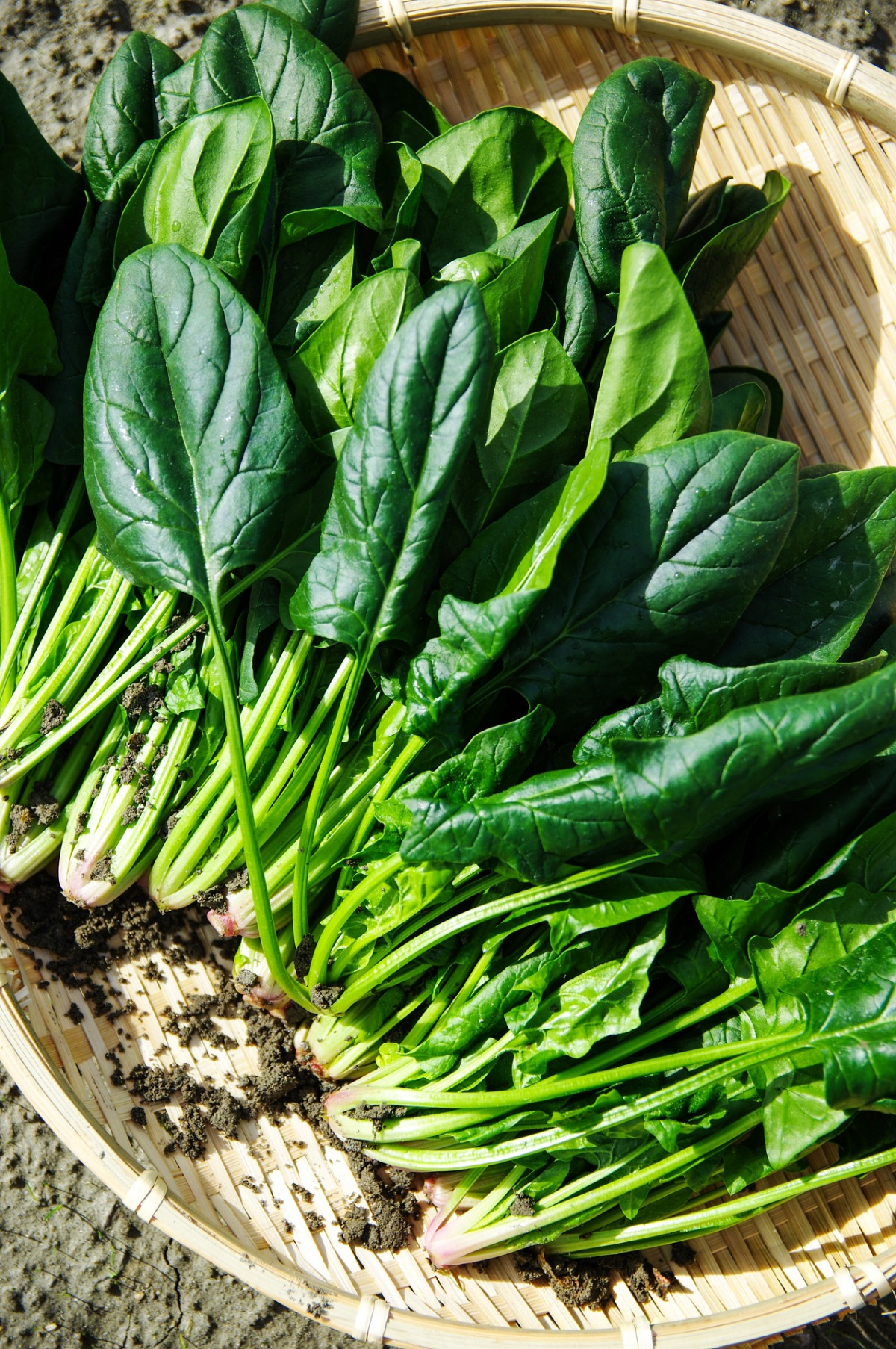
Spinach
A versatile and commonly-eaten leafy green, spinach ranks as one of my favorite greens. Personally, I am not wild about raw spinach salad (I would rather choose kale, arugula, or a nice crisp lettuce), but what you can do with cooked spinach is amazing. Chana saag or saag paneer, spanakopita, spinach, and goat cheese pastries…many of my favorite foods are made with spinach.
Raw spinach is considered cooling (so best reserved for summer), but cooked spinach is warming, heavy, and even a bit sour (Lad & Lad, 2009). These attributes make it perfect for balancing vata dosha. Cooked spinach even has a mild laxative effect (Lad & Lad, 2009). (Recall that constipation is a common symptom of vata imbalance—yet another reason to enjoy cooked spinach in the fall!).
Saag is one of my favorite ways to prepare (and eat) spinach. You may have had saag paneer or chana saag at South Asian restaurants. This is my super-easy saag recipe.
Easy Vegan Chana Saag
Enjoy chana saag as an entree to warm up on cool autumn nights. Eat with roti, naan, rice…or cassava tortillas work great too! Yield: 4 servings.
Ingredients
1 tablespoon coconut or avocado oil
a pinch of hing/asafoetida (optional)
2 teaspoons yellow curry powder (more or less to taste)
a pinch of cayenne (Capsicum annuum) fruit, powdered
a pinch of clove (Syzygium aromaticum) flower bud, powdered
16 ounces frozen* organic chopped spinach
1 13 oz. can full fat coconut milk
1 13 oz. can chickpeas
a handful of unsweetened coconut flakes for topping
*Though it is easy enough to find spinach in season in the fall and winter, I typically use organic finely chopped frozen spinach for saag. This is because fresh spinach is greatly reduced in volume once cooked, so the frozen spinach provides a more densely-packed option. However, you certainly could substitute fresh, finely chopped, densely packed fresh spinach here.
Directions
- In a large skillet, heat the oil and add spices.
- Don’t let the oil smoke. Once the oil is hot, add the spinach, cover, and cook on medium heat. Stir occasionally.
- Once the spinach is thoroughly cooked, add coconut milk and let cool.
- Either leave spinach as is (finely chopped) or use an immersion blender to make the mixture creamy.
- Drain the chickpeas and stir in. Cook on low for about 10 minutes until the entire mixture is warmed evenly.
To Use:
Serve with rice or bread. Optionally, top with a few sprigs of cilantro, a spicy chutney, or a small handful of unsweetened coconut flakes. Eat warm.
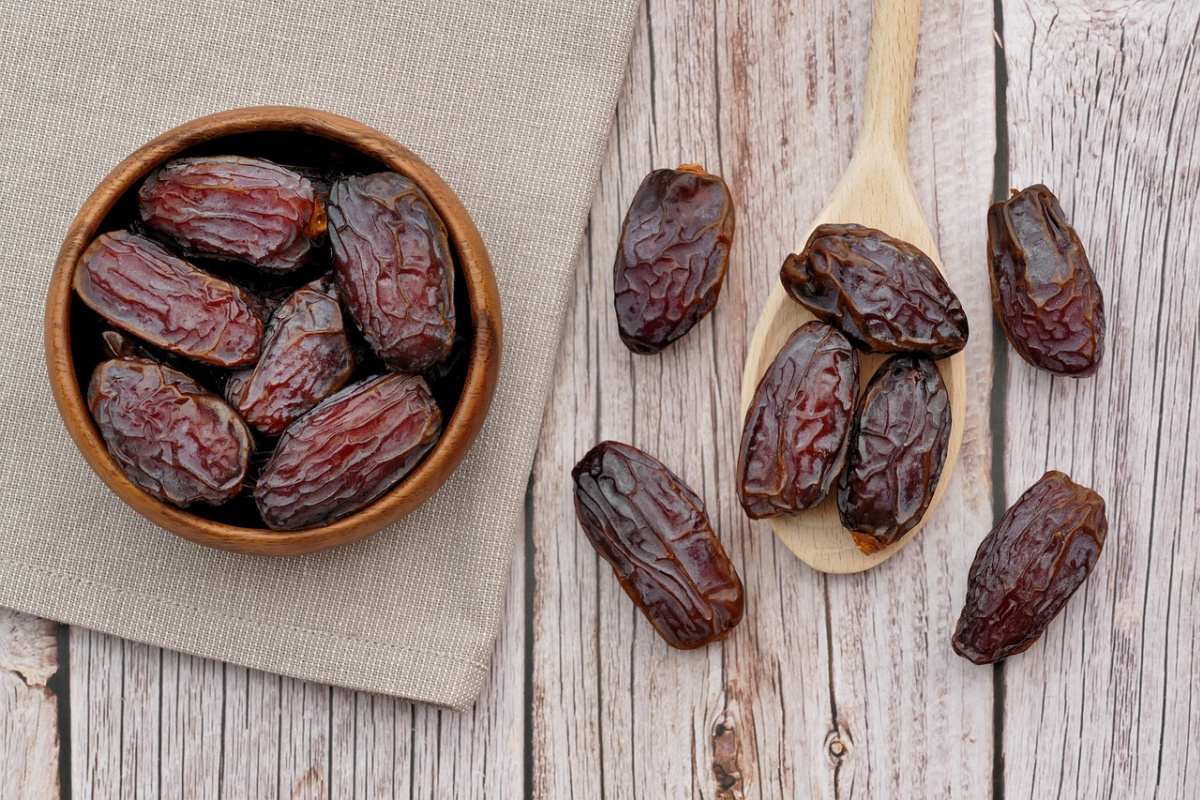
Dates
Not to skip over dessert, dates are an excellent snack or sweet treat for the fall. With a sweet taste, a nourishing post-digestive effect, and a heavy energy, dates are balancing for vata dosha and are thus a great food for your fall ayurvedic diet (Lad & Lad, 2009). Dates are appropriate for all three doshas, but are especially balancing for vata and pitta doshas. Also, these succulent, nourishing fruits are special in that they support ojas—translated as “vigor” or the vital essence of the immune system.
For boosting ojas, consider eating one-ghee soaked date per day. To do this, melt 1-2 cups of ghee, pour over several dates placed in a clean glass jar, and let the dates soak in the ghee, keeping the lid on the jar. Keep at room temperature and eat one date per day as a special ayurvedic tonic.
In addition, it’s no secret that dates are nature’s candy, sweet! However, they are also quite nourishing, offering a wealth of vitamins, minerals, antioxidants, and fiber (Sass, 2020). I like to enjoy a couple of plain Medjool dates as a small snack or dessert. Or, pit and stuff with nut butter for a wholesome dessert. Another fun and easy way to enjoy dates as dessert is to create a blend of cream cheese (dairy or non-dairy) and honey to taste. Stir until smooth and creamy and then spread inside a date half. Add a dash of cayenne and a walnut piece for an extra zing.
In Closing,
I admit that though I am never in a hurry for summer to end, I did get a touch of autumn nostalgia while writing this post. Whether or not you love the shift in season from summer to fall, greeting that shift with a supportive diet, as well as appropriate herbal and lifestyle practices, will likely make the seasonal shift a more graceful one. To stay balanced in the fall, focus on foods that are cooked, moist, seasonal, and nourishing. Fortunately, there are a bounty of delicious autumn foods to include in your fall ayurvedic diet.
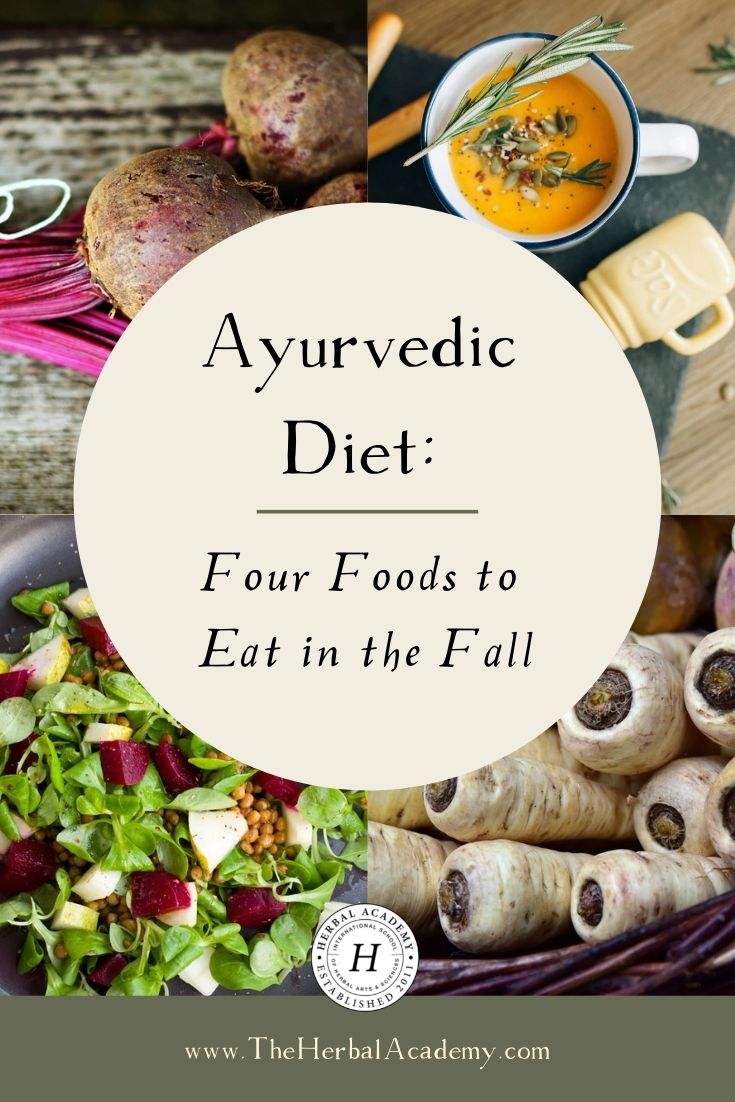
REFERENCES
Harvard School of Public Health. Winter squash. The Nutrition Source. Retrieved from https://www.hsph.harvard.edu/nutritionsource/food-features/winter-squash/
Lad, U., & Lad, V. (2009). Ayurvedic Cooking for Self-Healing. Albuquerque, NM: The Ayurvedic Press.
Pitchford, P. (2002). Healing with whole foods: Asian traditions and modern nutrition. Berkeley, CA: North Atlantic Books.
Sass, C. (2020). 7 health benefits of dates according to a nutritionist. Healthline. Retrieved from https://www.health.com/nutrition/groceries/health-benefits-dates








